Coronavirus: Is testing in Wales following the science?
- Published

The phrase "following the science" has been ever present throughout the coronavirus pandemic.
It is a term used by policy makers to justify their response, both in Wales and across the UK.
But as testing strategies and numbers have begun to differ between Wales and England, is it still right to say everybody is following the science?
And what is that science?
What are the differences between coronavirus testing in Wales and England?
Both nations have been working to increase the number of tests they are able to offer, but England has been more successful at doing this quickly.
The statistics appear to show that England has been able to pull ahead significantly from the other UK nations in the number of people it has been testing.
As of 18 May, around one person in every 34 had been tested across the UK as a whole, while it was more like one in every 63 in Wales.
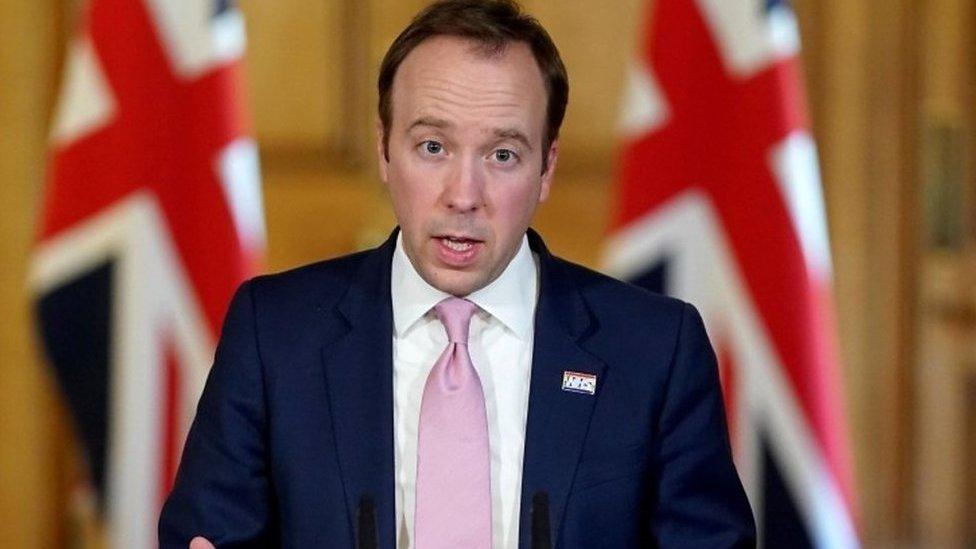
All residents and members of staff in English care homes will be tested by early June, Health Secretary Matt Hancock has said
The other big difference between Wales and England has been the criteria for being tested.
In Wales, the focus is still mainly on key workers, while in England tests are also being offered to over-65s who have symptoms, as well anyone traveling for work with symptoms, like a plumber.
However, there is a debate over whether simply testing more people is helpful.
Wales' Chief Medical Officer Dr Frank Atherton has previously suggested he did not believe in "testing for testing's sake." So, is there such a thing?
Sian Griffiths, emeritus professor at the Chinese University of Hong Kong, co-chaired the inquiry into the original SARS outbreak.
She said testing must have a purpose to be helpful. For the most part, she said that meant being able to follow up any test with a track and trace system.
"Until we have enough tests to break the transmission of disease, all you're doing is identifying cases," she said.
"That may help you, because you give the close family of that person clarity, but it doesn't help you because you haven't actually traced the disease, understood its epidemiology and the community."
Currently no UK nation is at the stage of being able to test, track and trace.
How do you choose who to test for Covid-19?
As outlined above, England has a wider criteria of people who can be tested, including anyone aged over 65 with symptoms.
This is where the phrase "following the science" comes in, although in reality science has several schools of thought on this.
Prof Karl Friston, from University College London, has been working on mathematical modelling for coronavirus and is part of Independent Sage, a group of UK scientists offering analysis independent to the UK government's official advisory group.
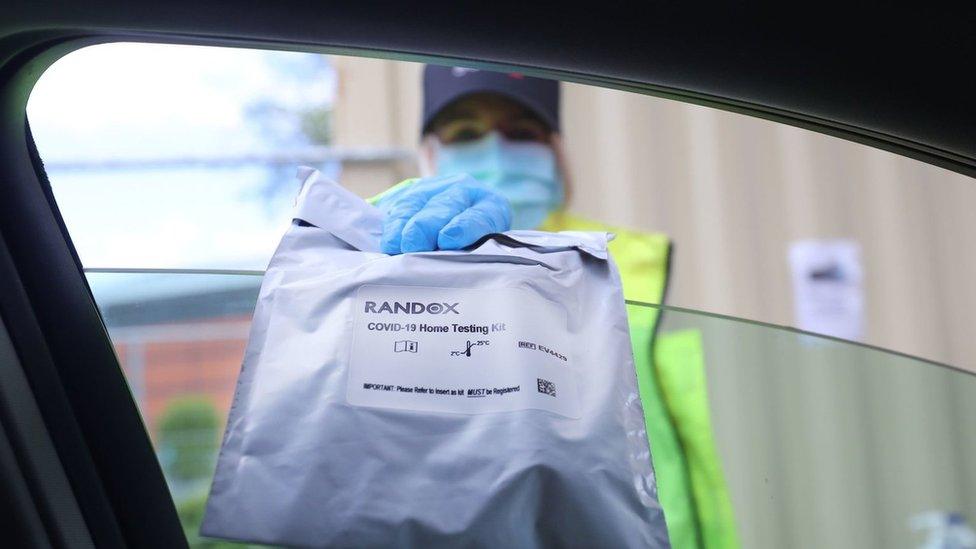
"There's absolutely no rationale for selective testing of people who are 65 and symptomatic," he said when asked into which scientific school of thought England's strategy fitted.
Part of the reason for this is because anyone over the age of 65 with symptoms would already be self-isolating and, therefore, could not pass the virus on, regardless of whether resources went in to testing them, he said.
"There are several reasons why you might be testing.
"If you're a doctor, or you're a care manager or you're a ward sister, and you need to know where to best care for this person. You need to know whether they're positive.
"If you are a chancellor and are worried about the economy, your agenda will be to get people back to work.
"You certainly don't want them sequestered in self-isolation unnecessarily. So you're going to want to test those people."
Prof Friston said a third school of thought would be to offer random screening tests to large numbers of people. That would help you gauge what proportion of the overall population may be infected at any one time.
This type of testing was carried out in England last week.
The perfect science, if you like, for driving virus numbers down would be a robust test, track and trace policy.
"If person X has symptoms they need a test and then they need to go into isolation," said Prof Griffiths.
"Their contacts need to be identified, traced and told to go into isolation/quarantine.
"If the test is positive, everyone stays in quarantine for two weeks and contacts should ideally be tested to see if they are infected. If the test is negative everyone can be reassured they don't have Covid."
Last week, the Welsh Government announced 1,000 staff would be needed to implement just such a test, track and trace policy.
What about testing in care homes?
The subject of testing in care homes has also proved to be divisive.
In England, all care home residents have been eligible to be tested since late April, while in Wales the criteria had until very recently been narrower, with eligible care homes needing to have already had a positive case, or have more than 50 residents.
Back at the end of April, First Minister Mark Drakeford said there would be "no value" in providing tests to all care home residents, but that stance appears to have changed following complaints that England was doing more.
At the weekend, Health Minister Vaughan Gething announced testing would be rolled out to all care home residents and staff in Wales. A move the Welsh Government said was inspired by "the latest scientific evidence".
It now means the last outstanding difference between the nations is England's target to have tested all of its care home residents and staff by early June, while Wales has said it aims to do the same "shortly."
But what do the experts make of testing all care home residents regardless of symptoms?
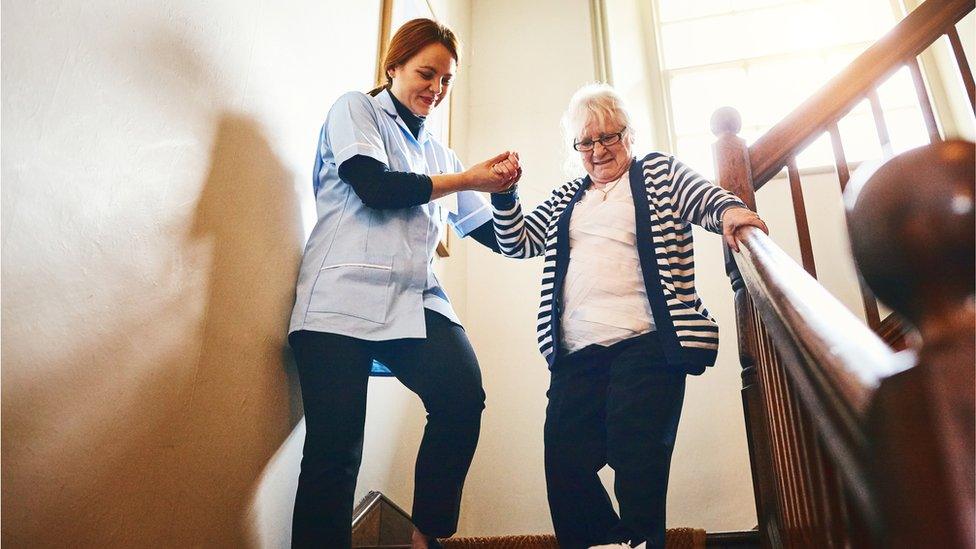
Initially only care home residents and staff with symptoms were offered tests in Wales
Prof Gabriel Scally, President of Epidemiology and Public Health section, Royal Society of Medicine, said it was far more important what the nations do with the information they get about infections in care homes.
"My concern is more that we have a full system in place to test and trace every case," he said.
"Without that, simply saying we're going to test everyone in a care home by June is tokenistic.
"It may tell you the extent of infection within care homes, but what you then do with that information is more important."
Why is Wales not testing for coronavirus like Hong Kong and South Korea?
South Korea has been seen as something of a bench mark in testing.
Its close proximity to China meant it was viewed as having the potential to be one of the worst-affected nations.
However, South Korea was quickly able to expand and roll out an aggressive test, track and trace system and has now recorded a fraction of the number of deaths and confirmed cases seen elsewhere.
So, why didn't we just do that here?
"I think we're being driven by the resources and availability of testing," said Prof Griffiths.
"What we'd like to do, and what we're able to do are not the same thing at the moment."
Coronavirus: How South Korea 'crushed' the curve
Prof Griffiths said experiencing the Sars outbreak in the early 2000s enabled East Asian countries to be far-better prepared.
"The whole of the UK was disadvantaged by the fact that we didn't have a testing industry.
"My experience is mainly in the far east, and you will have seen that, Hong Kong, Korea, Singapore China have done many more tests.
"The reason for that is that they have had the experience with Sars and they know that the way to get through this is to be able to identify cases, track their contacts, put them in isolation and break the chain of transmission.
"We didn't have the capacity to do that. We started, as we had a few cases we were able to do contact tracing effectively.
"But as the numbers grew we were then unable to do the community containment, which relies on testing, and the policy changed."
Is Wales losing out in the global coronavirus testing arms race?
The lack of existing testing resources in Wales and the rest of the UK has meant there has been a need to order in from overseas.
It is arguably one of the biggest problems in expanding testing, as ministers have eluded to.
Explaining the decision to abandon the Welsh Government's target to have 5,000 test a day by mid-April, the first minister explained: "We were relying on equipment coming to Wales from overseas. We were relying on some reagent chemicals coming to Wales from overseas.
"Those deliveries haven't arrived to the timescale we had hoped."
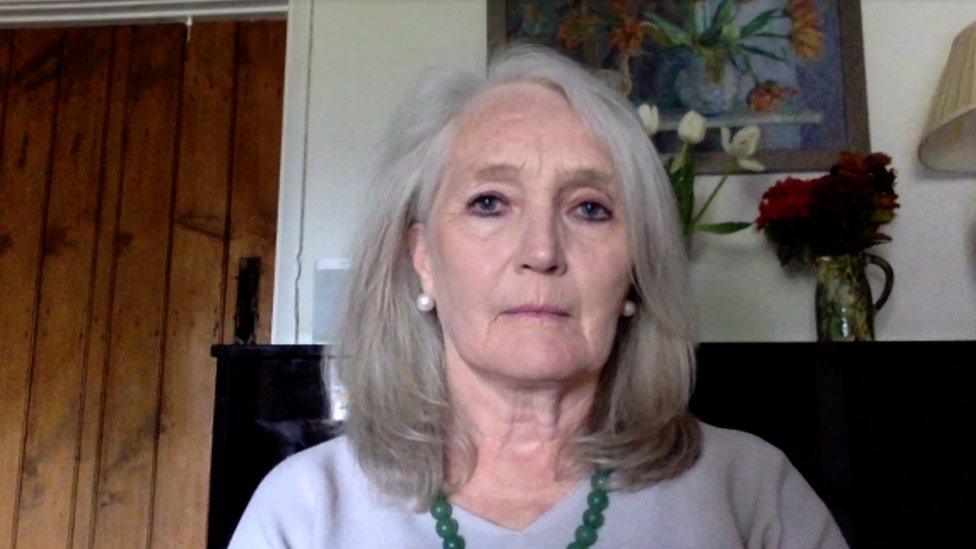
Prof Sian Griffiths is also chair of Staffordshire University's Centre for Health and Development
Prof Griffiths agreed competing in the global market for testing equipment was difficult.
"It would probably be a more sensible approach to work as the four nations of the UK together on the ability to get reagents and swabs," explained Prof Griffiths.
"Otherwise you've got little itty bits going in against much larger groups, such as the US. So working together is probably a more effective way of increasing the availability of reagents - and then the vaccine when it's ready."
Does it matter that Wales has the capacity to do more tests than it is actually doing?
This is again something with which all nations appear to have struggled. Each has a testing capacity for each day, but very rarely do the actual number of tests done come close to it.
Last week, Wales was doing around 1,200 tests per day despite having a capacity which rose from around 2,000 to around 5,000.
Arguably, this means each day there are people who could have been given reassurance about their symptoms who have not been. But the wider scientific picture is more complicated.
"It depends on how existing tests have been used and whether the capacity to contact trace is in place," explained Prof Griffiths.

LIVE UPDATES: US braced for surge in deaths
A SIMPLE GUIDE: How do I protect myself?
LOOK-UP TOOL: Check cases in your area
MAPS AND CHARTS: Visual guide to the outbreak

"Numbers of cases are lower in Wales and therefore lower testing rates might be expected using current testing criteria.
"As the criteria changes with lockdown release you will expect higher numbers - but to do this you need to have enough tests and contact tracers."
In other words, what matters far more is your ability to apply an army of contact tracers to those tests being done, in order to track down and isolate anyone infected.
Do coronavirus testing targets make a difference?
One other key policy difference between Wales and England has been the emphasis on targets.
While UK government policy has featured a well-reported target of hitting 100,000 coronavirus tests per day, ministers in Wales have been more vague with time frames.
They previously refused to re-set targets after dropping plans for an equivalent 5,000 tests by mid-April.
"Targets are useful in general for getting health services working and doing what they ought to be doing," explained Prof Scally, who also sits on the independent Sage group.
"But it's not so much the tests, it's the people who are tested.
"I think a big concern should be the date of 12 March when the decision was made in Whitehall, followed by Scotland, Wales and Northern Ireland, to stop testing in the community.
"At that time, the chief medical officer of England said it was to pivot the testing towards hospitals. It was extended to hospital workers and key workers and then care homes.
"But what hasn't happened, is that there hasn't been a testing system set up in the community.
"So, I'm not so much concerned about the absolute number of tests performed, but where they're being performed and whether they're delivering the information we need."

Health Minister Vaughan Gething said on 21 April Wales did not need 5,000 coronavirus tests a day
Last week, the Welsh Government announced an ambition to up testing to 10,000 and then 20,000 tests per day over the coming weeks and months.
"I would have thought 20,000 should be able to do the job," said Prof Scally.
"Of course, it depends on the number of cases that are out there and multiplying. You won't know what that is to start so it's a kind of a chicken-and-egg situation.
"I would have thought, if you've got 20,000 tests available a day then that would be a really, really major contribution.
"That should be enough to make it work in Wales, if it's set up properly and locally, and well organised."
- Published17 May 2020

- Published16 May 2020

- Published17 May 2020
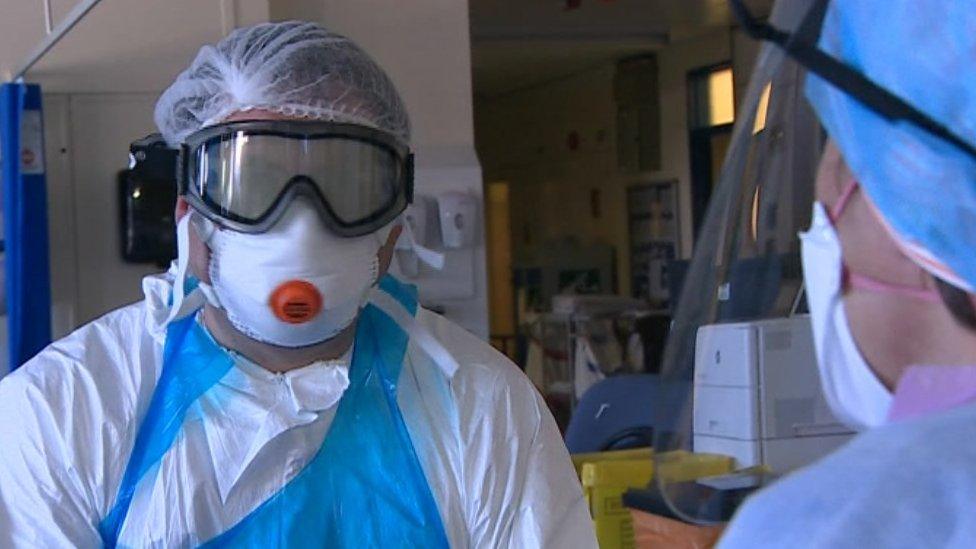
- Published26 November 2020
